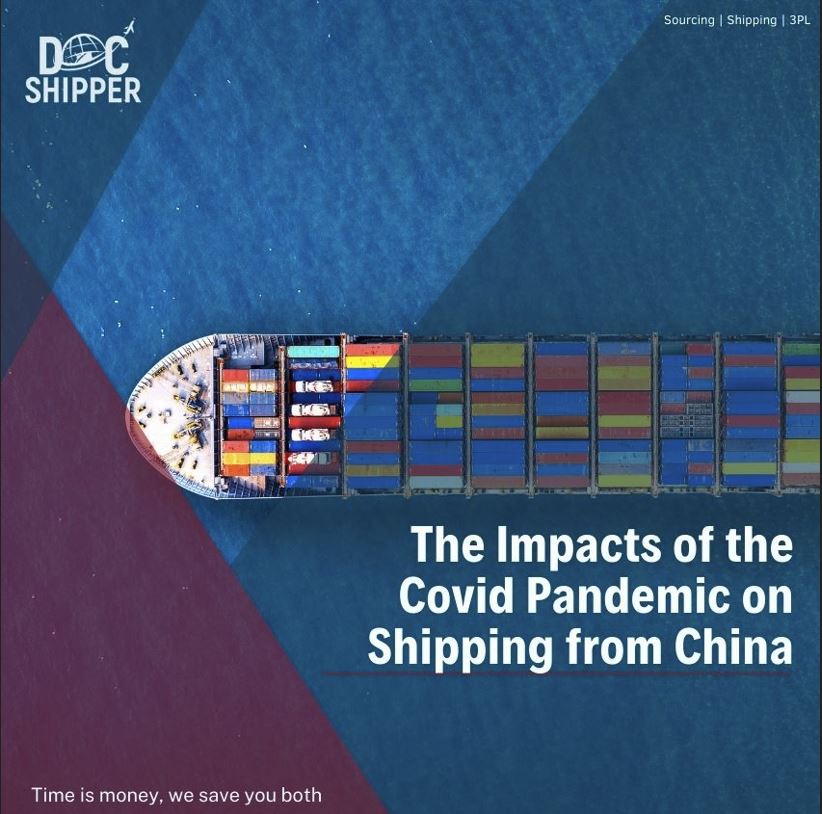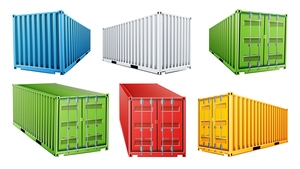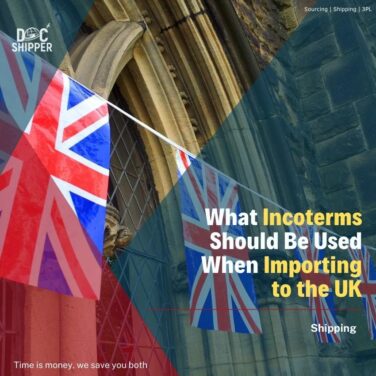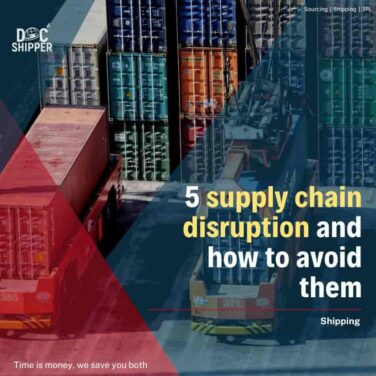Mostly with international shipping at the front line of trade and reliant on transportation and human interaction, the outbreak of COVID-19 has had a material impact on the shipping industry, both directly and indirectly. The activities of freight forwarders and related businesses, such as terminals and ports, have been hampered as a result of personnel being advised not to travel or report to work. Increased demand for goods and raw materials, and thus the need for shipment, has resulted in higher freight rates. The relatively positive performance of overall average trade, however, masks significant differences across products, economic sectors, and trading relationships. The early 2020 trade collapse did not affect all products equally. Business impacts on specific products, services, and trading partners present a very different picture, as well as created pressures on specific sectors and supply chains that were much more pronounced.
Supply Chain Disruptions
China is definitely the world’s greatest trading country, and the potential of it to help keep its factories functioning through the pandemic have been essential for worldwide supply chains. Some overseas supply chains came under stress during the early weeks of the pandemic because of remarkable need (e.g., for private protective equipment). Though, the information additionally show that several significant supply chains stayed resilient plus have been important in the healing of the economic system in late 2020. For instance will be the semiconductor industry, in which shortages of supply are actually found to help with interruptions in downstream industries while in the COVID-19 pandemic. That is the warning through HSBC economists that caution that if the extremely infectious omicron version that is today swamping a lot of the global economic climate spreads throughout Asia, particularly China. Now disruption to manufacturing is going to be unavoidable. Manufacturing will be disrupted as a result, particularly in China. Since the start of the Covid-19 pandemic, supply chains were at the heart of trade and policy disputes, from sanitary equipment shortages to microchip shortages. While Covid-19 was still mostly restricted to China, firms around the world dependent on intermediate goods manufactured in this area experienced a supply interruption. As a result, the early Chinese closure presents a natural test of an upstream supply chain interruption encountered by companies that rely on China for intermediate supply.
Container shortage
The shipping container is in the middle of the worldwide supply chain crisis, that has interrupted the delivery of from medical resources to holiday presents. Due to widespread manufacturing delays & bottlenecks, there are not enough of these containers in the correct place and at the proper time. Additionally, there are way too many containers at shipping terminals, that is blocking up ports and blocking much more cargo from arriving. Exporters, meanwhile, are striving to uncover the empty containers they would usually use to ship the products of theirs to clients abroad. These shipping container troubles are continuing to accumulate as the bigger manufacturing method they helped allow also struggles to adjust. These developments made the groundwork for today’s “just in time” strategy to worldwide manufacturing. This product makes all kinds of items cheaper to make abroad and also allowed specific businesses to focus on niche pieces, similar to the chemicals used in clear plastic presentation and special computer chips. It has been a boon for the box delivery industry, that rakes in vast amounts of dollars each year moving raw materials, components, and finished items between facilities before they are at last sent to customers. Perhaps Amazon is attempting to break into the luggage delivery business today. But when the pandemic made apparent, this particular method has a lot of drawbacks. When one item is created throughout numerous facilities, one disruption, such as a COVID-19 outbreak, could ripple with the supply chain as well as cause substantial issues. And also the pressure to meet up with strict delivery timelines might be gruelling as well as dangerous for individuals with supply chain tasks, including factory workers as well as truck drivers.
DocShipper Tip
This pandemic made everything a challenge, logistics industry is no exception. The container shortage has made the trade to become slow. Finding the container to ship the products has become a challenge. But our DocShipper experts are here to help you, if you find any problems or if you have any questions regarding containers. Please do not hesitate to contact us with all your requirements. Our team will get in touch with you.
Ships availability
Ships arriving at the Yantian terminal are postponed by an average 7 days, and also the quantity of ships arriving from Europe and also the U.S. has fallen over 40% in the past 2 weeks. Which will come in addition to the issues Shenzhen port was experiencing, having a viral outbreak a bit earlier this particular month top to lockdowns of districts. Tests of employees, as well as transportation waiting times in the Shekou and Yantian container terminals. The Chinese province of Guangdong has experienced an unexpected up tick of Covid-19 situations. Authorities have moved to turn off companies as well as districts to keep the disease from spreading quickly. That is contributing to substantial delivery delays in huge Chinese ports, and also jacking up already high delivery fees as waiting around times at berth. Guangdong, a significant delivery hub, accounts for approximately 24% of China’s complete exports. It is additionally home to the Shenzhen port and also the Guangzhou port that will be the 3rd biggest and also the 5th biggest in the earth by pot amount, based on the World Shipping Council.
Impact of Covid-19 on transportation
COVID-19’s impact on freight transit, with a special focus on China as, the number of confirmed cases of COVID-19 increased. It was shown that COVID-19 has a negative impact on China’s freight transportation turnover, resulting in emergency stockpiling and mismanagement of vital resources and facilities, market supply and demand instability. And changes in consumer purchasing and consumption patterns, such as increased fears and declining investment. China’s fear of reintroducing the coronavirus is another factor. COVID-19 rules have caused global maritime disruptions, such as the current lockdowns in Vietnam. However, the problem is most acute in China, where most foreign travel, including a significant amount of outbound travel, is prohibited. Ports are particularly vulnerable, with periodical shutdowns for mass testing when it comes to contaminated employees.
DocShipper Tip
It is advised to check the transportation company before moving your goods, If there is any delay in shipping your goods it might be mishandled or will be damaged. So, you should be vigilant while your products are with the freight forwarders. If you have any questions regarding this, please do not hesitate to contact us.
Surge in demand
On the supply edge, on account of other industrial facilities being forcibly shut, different industries experienced supply chain issues. For instance, the manufacturing business continues to be adversely affected by COVID-19 because of the lack of raw materials. On the demand aspect, marketplaces for emergency medical tools, personal protective gear as well as food that is healthy have surged within the wake of the Covid-19 outbreak. Thus, individuals are hoarding resources for anxiety about shortages as the pandemic will continue to spread around the planet. The outbreak has brought financial hardship and anxiety, though it is additionally produced brand-new possibilities and altered the company atmosphere during the outbreak, towns depended on delivery employees for vital essentials like meals, medical attention, as well as cleaning supplies. The pandemic has changed people’s usage behaviour.
FAQ | The Impacts Of The Covid Pandemic On Shipping From China
Read more
Looking for more? These articles might interest you:
DocShipper info: Do you like our article today? For your business interest, you may like the following useful articles :
- Coronavirus (Covid-19) impacts on import/export business
- How does Coronavirus impact international supply chain?
- 💡How to find a good product to sell?
- How to find your reliable supplier for your business? [Fair Trade Guide]
- AliExpress | Use the Chinese panacea to sell your products online
- How a sourcing strategy can rocket your margin?
Need Help with Logistics
or Sourcing ?
First, we secure the right products from the right suppliers at the right price by managing the sourcing process from start to finish. Then, we simplify your shipping experience - from pickup to final delivery - ensuring any product, anywhere, is delivered at highly competitive prices.


Fill the Form
Prefer email? Send us your inquiry, and we’ll get back to you as soon as possible.
Contact us







